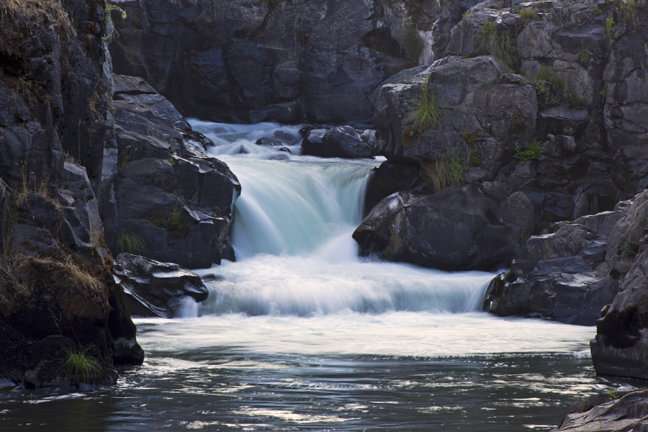Complex river networks better support stable watershed populations

How are populations of living organisms maintained in changing environments? This ecological question is even more imperative as many species are increasingly threatened by climate change and human influences. A new University of Minnesota study, published in the Proceedings of the National Academy of Sciences, helps answer this question for riverine organisms.
Life in streams and rivers is highly influenced by downstream flow of water through networks of connected channels, with small streams joining to form larger streams and rivers. Researchers from the University of Minnesota and Hokkaido, Japan, led by Akira Terui, Ph.D., explored how complex river systems underpin watershed-scale populations using mathematical models and analyses of 18 years worth of fish population data in Japan. They found that more complex river networks, with greater levels of branching, stabilize watershed populations by providing a physical template that supports diverse habitats and buffers the impact of large-scale environmental fluctuations.
"We discovered watershed populations were more stable when they were situated in more complex river networks," said Terui. "Network complexity of rivers may act as a natural defense system against environmental uncertainty."
Among the study's key findings:
- mathematical models predict increased branching stabilizes watershed-scale population dynamics when individual streams (i.e., "branches") in a network provide unique environmental conditions;
- in support of the model prediction, branching complexity provides stabilizing effects across populations of four ecologically distinct fish species, which include economically valuable species such as masu salmon;
- loss of network complexity due to human activities may undermine resilience of watershed populations.
"Human activities often reduce complexity of stream networks," said Jacques Finlay, Ph.D., professor in the College of Biological Sciences and co-author on the study. "This work demonstrates the critical importance of maintaining diverse environmental conditions throughout watersheds for populations of river organisms."
According to Terui, incorporating the network complexity perspective into conservation decision making will help achieve greater success of environmental restoration and preservation actions in riverine systems.
"The results of the study should be widely applicable to populations of many riverine organisms," Terui said. "Recognizing and managing for complexity of river networks is a promising tool to conserve riverine biodiversity as well as natural resources under global changes in climate and land use."
More information: Akira Terui et al. Metapopulation stability in branching river networks, Proceedings of the National Academy of Sciences (2018). DOI: 10.1073/pnas.1800060115
Journal information: Proceedings of the National Academy of Sciences
Provided by University of Minnesota

















